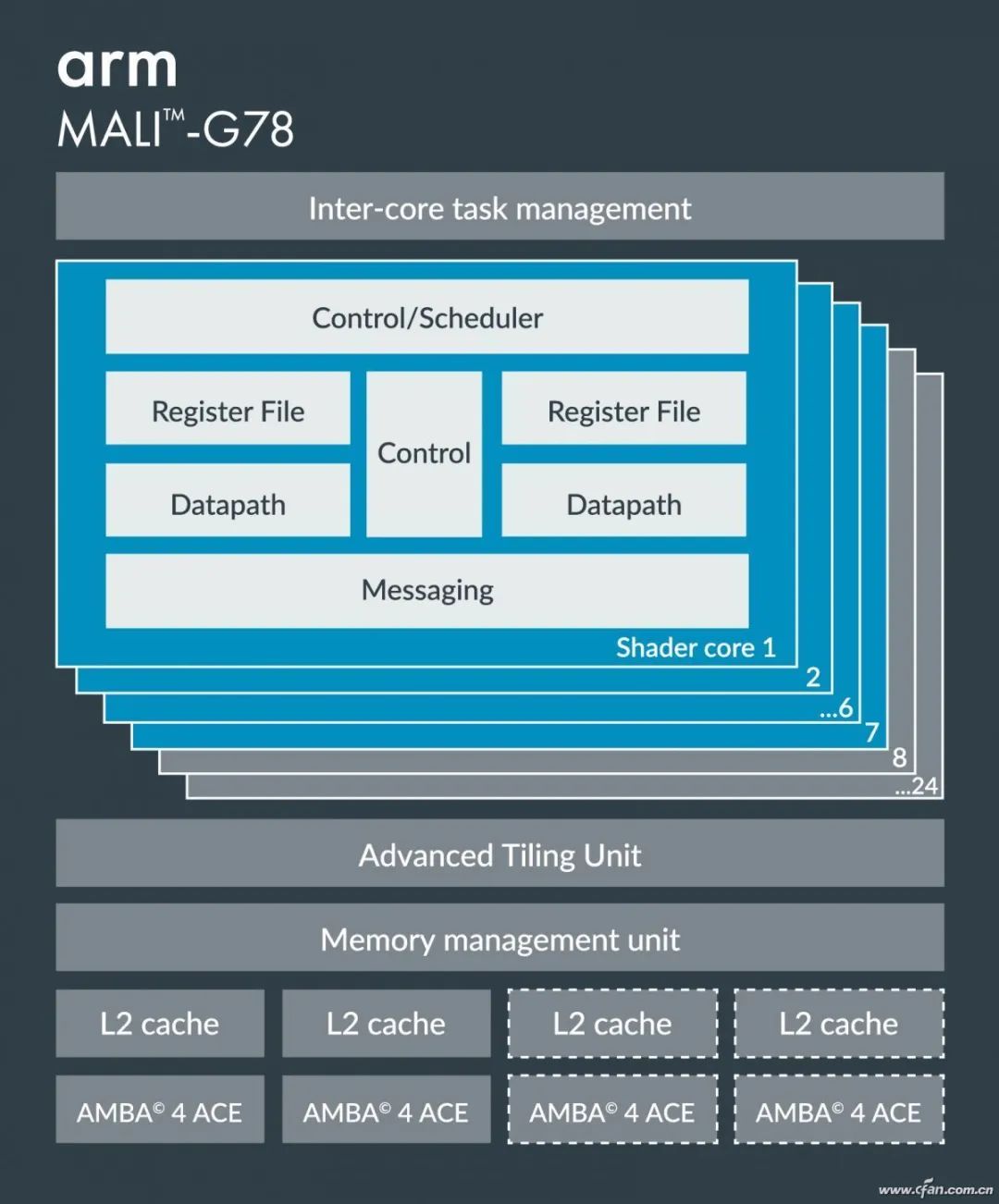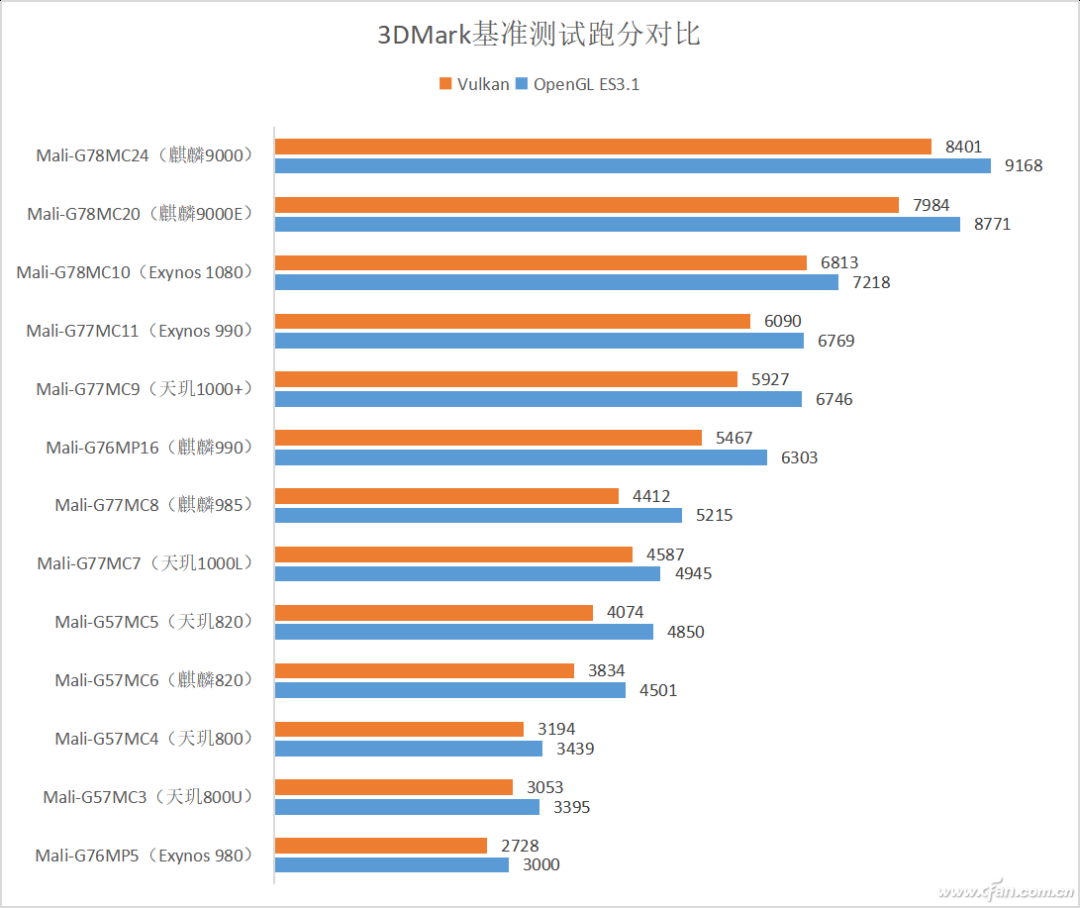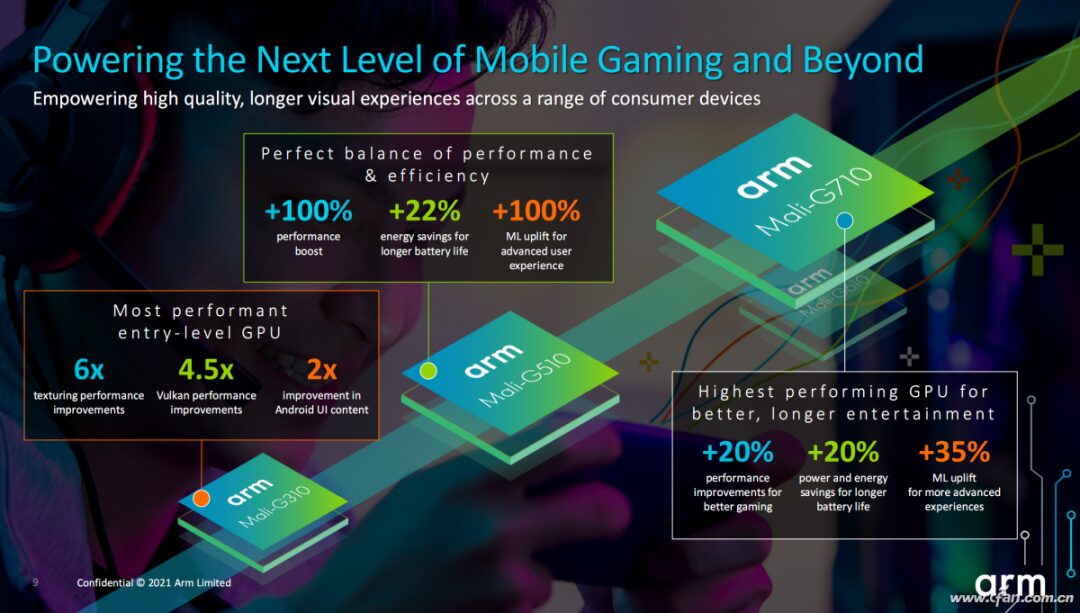
Click the above Computer Enthusiasts to follow us

It should be noted that ARM does not produce processors itself; it only provides instruction set or architecture licenses, including the well-known Cortex-A and Mali-G CPU and GPU core IPs. For the Mali-G series GPUs, the three main elements affecting performance are the architecture, the number of compute cores, and the core frequency.
ARM iterates its GPU IP approximately once a year. For example, the Mali-G78 (along with Mali-G68) was released in 2020, the Mali-G77 (along with Mali-G57) in 2019, and the Mali-G76 (along with Mali-G53) in 2018. The Mali-G7x series is positioned as high-end, while the Mali-G5x targets the mid-range. It goes without saying that the latest architecture naturally possesses stronger performance.
After chip manufacturers (such as Samsung or MediaTek) obtain the ARM Mali-G IP core license, they can pair it with different numbers of compute cores (which can be understood as stream processors) based on the positioning of the SoC they are developing. For the latest Mali-G78, it can be configured with a minimum of 7 and a maximum of 24 compute cores, i.e., Mali-G78MC7 to Mali-G78MC24. With the same core architecture, the more compute cores, the stronger the performance.

While having more compute cores is generally better, to balance performance, heat generation, and power consumption, chip manufacturers and smartphone vendors can flexibly adjust the GPU core frequency. A lower number of compute cores with a higher core frequency can also outperform a higher number of cores with a lower frequency, which requires a series of optimizations and adjustments to find the best balance of energy efficiency.

Note: The GPU of Dimensity 1100 and Dimensity 1200 is the same as that of Dimensity 1000+, just with a higher frequency and a slight performance boost; Dimensity 900 integrates Mali-G68MP4, and the 3DMark score data is currently missing; theoretically, its 3D performance is between Dimensity 820 and Dimensity 1000L.
From the theoretical test scores of 3DMark, it can be seen that the architecture of ARM GPU cores has the highest weight, followed by the number of cores, and the core frequency is the least important. This can be evidenced by the fact that Mali-G77MC9 can outperform Mali-G76MP16. Therefore, if you are particularly concerned about the 3D performance of smartphone SoC chips, focusing on the latest GPU architecture and more core counts is definitely the right approach.
Recently, ARM released four new GPUs: Mali-G710, Mali-G610, Mali-G510, and Mali-G310. They all adopt the third-generation Valhall GPU architecture and can form a complete and powerful SoC solution when combined with Cortex-X2/A710/A510 CPUs through CoreLink CI-700 consistency interconnect technology and CoreLink NI-700 chip network. This series of GPUs is expected to debut with Dimensity 2000, with mass production around the end of the year.

It is reported that Samsung Exynos 2200 will also integrate a new RDNA architecture GPU customized by AMD for mobile platforms, making the competition in the mobile GPU market even more exciting. Which GPU brand’s future do you look forward to more?

Click “Read the Original” for more exciting content